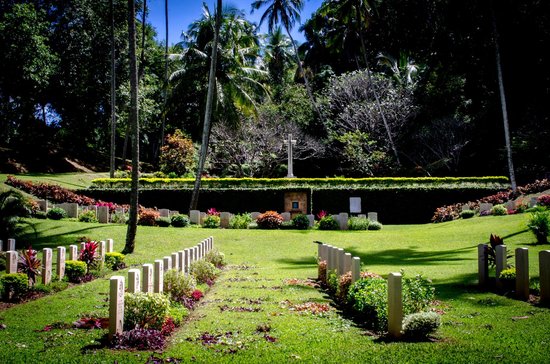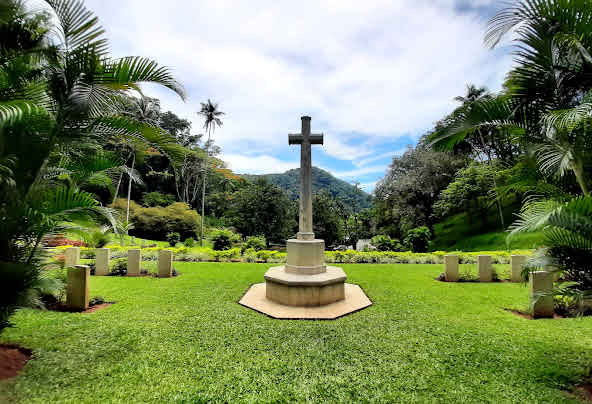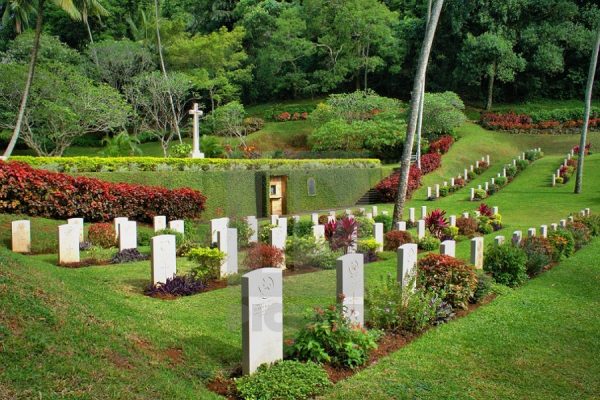General
Commonwealth War Cemetery – tribute to brave warriors By Arundathie Abeysinghe






Located approximately 1.5 kilometers from the entrance to the *Peradeniya Botanical Gardens, the Cemetery is maintained by the Commonwealth War Graves Commission.
Among the burials in the Cemetery, 203 buried comprise 107 British, 35 East Africans, 26 Sri Lankans, 23 Indians, 6 Canadians, 3 Italians, 1 Frenchman and 2 unidentified persons. Of the 203 dead, 151 had served in the Army, 32 in the Air Force, 16 in the Navy, 2 burials were unidentified, 1 was a merchant in the Navy and 1 was from the national fire service.
During World War II, *Ceylon was a naval and air force base, a training ground for jungle warfare as well as the location of a hospital for injured soldiers. Located in a strategic position in the Indian Ocean astride the allied sea route linking Australia, India and the Middle East and being the hub of maritime power in the Indian Ocean, Ceylon was the headquarters of the Supreme Allied Commander, Southeast Asia Command from April 1944 to November 1945.


The majority of military deaths in the island during World War I occurred in Colombo Military Hospital, to which sick or injured troops who were either based in Ceylon or were evacuated from passing ships had been brought for treatment.
During World War II there was a decisive moment for the British defending the empire against the Japanese after Singapore was occupied by the Japanese. The military headquarters were shifted from Burma to Ceylon. During this period, the city of Kandy was a significant center and the headquarters of the South East Asian Command, a key location for the war effort from April 1944. *Admiral Lord Mountbatten was the Supreme Allied Commander coordinating the land war against the Japanese. Lord Mountbatten gave his instructions from Peradeniya Botanical Gardens to hold up the Japanese. Hence, Kandy played a significant role during the British Colonial era.
There are two British Cemeteries in Kandy, the Commonwealth War Cemetery and *British Garrison Cemetery.
Due to its location and salubrious weather, the Commonwealth War Cemetery is considered one of the most beautifully landscaped and maintained war cemeteries.
The Special Memorial commemorates a naval man known to have been buried in the cemetery but whose grave could not be precisely located. It bears the superscription “Buried near this spot”.
The War Cemetery is located in close proximity to the *Mahaweli River.
Opening and closing times
10 a.m. to 12 noon and 1 p.m. to 6 p.m. (Daily)
- British Garrison Cemetery in Kandy – mine of information – By Arundathie Abeysinghe


- Admiral Lord Mountbatten (1900 – 1979) – British admiral and administrator Lord Louis Mountbatten served in the Royal Navy before rising to become supreme Allied commander in South East Asia during 1943-1945. As the last viceroy (1947) and first Governor-General of India (1947 – 1948), he oversaw the independence of India and Pakistan. He served in the World War I in 1916 with the Royal Navy and continued his naval service during the inter-war period and during the World War II. Lord Mountbatten was appointed Viceroy of India in March 1947 with a mandate to transfer power to India by June 1948. Upon arriving in India, he established a good working relationship with Jawaharlal Nehru, leader of the Indian National Congress.
- Ceylon – Sri Lanka gained Independence from British Colonials in 1948. In 1972, Ceylon became a republic within the Commonwealth and Ceylon was thereafter known as Sri Lanka.
- Mahaweli River – Sri Lanka’s longest river, 335 kilometers in length with a drainage basin of 10,448km2.
- Peradeniya Botanical Gardens – Located 460 meters above sea level, Peradeniya Botanical Gardens or Royal Botanical Gardens is the oldest formal garden in Sri Lanka. Situated approximately five kilometers west of Kandy City, there are over 4000 species of plants including orchids, spice plants, medicinal plants and palm trees and attracts approximately 1.5 million local and foreign visitors annually. The Gardens is considered as the best botanical garden in Asia.








